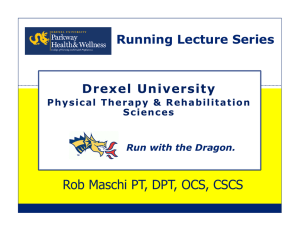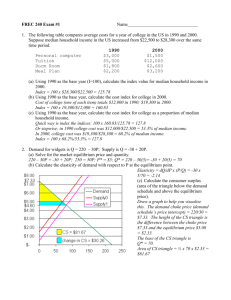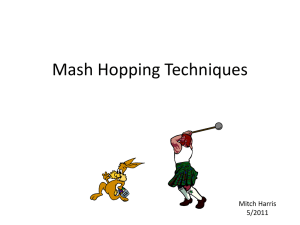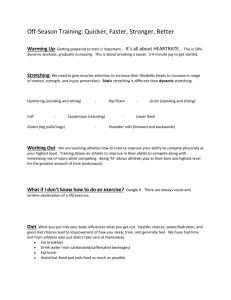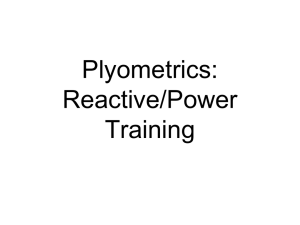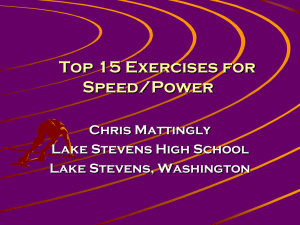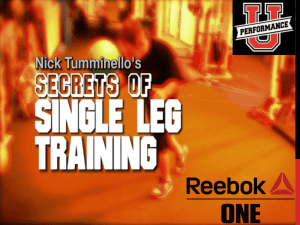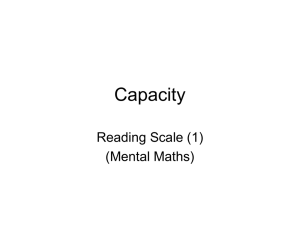PlyOmetric Training for speed
advertisement
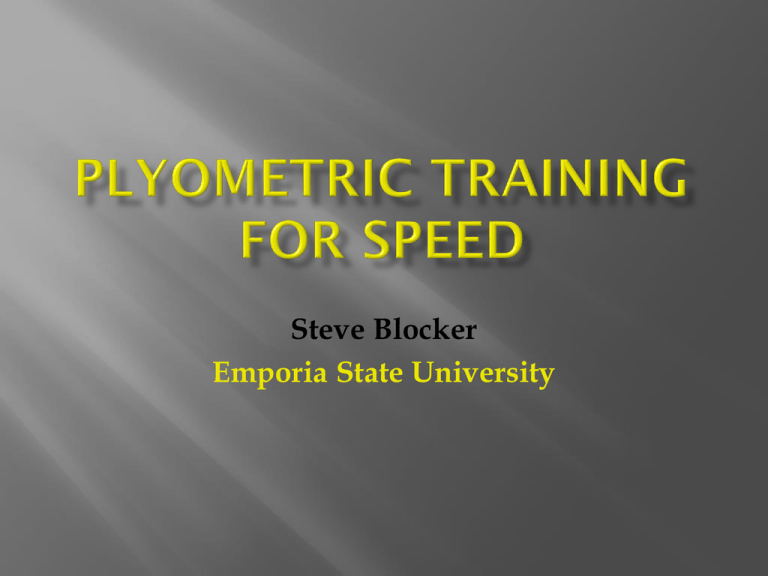
Steve Blocker Emporia State University First utilized by Soviets & East European athletes (track & field) Yuri Verhoshansky Exploit elastic properties of muscle in order to produce more forceful contraction Plyometrics or “jump training” considered link between strength & speed Training adaptations include: Increased RFD Musculotendonous stiffness Improved rate coding & synchronization Train fast to be fast! Develop maximum strength first Athlete should master the back squat Adaptations to strength training are similar w/less risk of injury Plyometric training can benefit any athlete 2003 study – distance runners increased running economy & improved 3k run performance Trained subjects were used Good method to improve foot/ankle & joint strength Who Should do Plyometrics? Strength first! Training ageappropriate Event appropriate: Consider amount of jumping/sprinting already being done in event practices Back Squat 1.5xBWT Back Squat 60% of BWT for 5 reps in 5s or less Low intensity plyo work can still be introduced to the beginning athlete even if they do not meet these requirements Always perform on a softer surface Sand isn’t always better Grass/turf/track/carpeted room/wrestling mat Proper footwear – don’t go barefoot just yet Adequate rest intervals – no puke index 1:5 work : rest Athletes who weigh more than 225lbs should avoid high intensity plyos – (NSCA) Always do early in the training session/week Try to avoid fatigue as much as possible Less is more Beginners - ~100 contacts Intermediate ~ 200 contacts Advanced ~ 400 contacts *Intensity level is important Beginners –ramp volume & intensity for 2-3 weeks More advanced/intense training – follow: Base week: 275 total contacts Volume week: 300 total contacts Recovery week: 250 total contacts Peak week: 325 total contacts *only higher intensity exercises w/advanced athletes Start slow: Pre-season/General Prep Goal: Develop structural strength/technique Exercises done mostly in-place Gradually allow forward movement (drifting) No measuring of distance 2-3 week cycle Gradually increase volume – (cup analogy) Developers can repeat cycle with slightly more intensity SL vs. DL Multiple vs. Single Response (MR vs. SR) Hops vs. Bounds Height of jumps (hurdles/boxes etc.) Distance covered always trust your judgment Preseason workout – (entire team) 3x8 DL hops (in place) 3x8/leg SL hops (in place) 3x5/leg skater strides 3x8 jumps onto box/practice landing 3x5 DL hops into pit Use teaching cues: thumbs up/exhale upon jump/minimize ground contact and maximize height Progress over small hurdles or objects Monday Tuesday -3x5 jumps onto Normal Track box/practice Workout – landing conditioning -3x8 DL hops oriented -3x8/leg SL hops -3x5/leg Skater Strides -3x5 DL hops into sand pit Total volume: 93 contacts Intensity: low Wt Rm: Oly lifts or upper body Wednesday Cross Train/ Gameday Rest/ Recovery Weight Room: Circuit/abs or off day Thursday -3x5 jumps onto box/practice landing -3x8 DL hops w/low objects -3x8/leg SL hops w/low objects 3x5 tuck jumps -4x5/leg Skater Strides -3x5 DL hops into sand pit Total volume: 113 contacts Intensity: low Friday Speed Endurance Workout 3x20m push-up sprints – walk back rest DL hops for height – 5 jumps or backboard jumps (SR) Plyo-push ups – 3x5 for height (MR) 3x30m straight leg bounds into 10m “burst” (MR) 10 DL jumps into pit – walk out after each jump (SR) Decrease or maintain volume Replace a plyometric workout with a traditional competition Sprinting at maximum effort is also plyometric Monday Tuesday Plyometrics & Speed event specific Endurance at short speed low intensity. work. 8x200 w/2Block work. 4min rest @ 75% Weight Room Wednesday Small Meet Thursday Shake Loose Pre-Meet Only lowintensity exercises as part of the warm-up Friday Meet Complex Training Method: Heavy lift followed by plyometric exercise Stimulate Nervous System Use compatible exercise combos Back Squat/Tuck Jump/Depth jump Deadlift or Power Clean/Box Jump Bench Press/Clap push-up/Med-ball chest pass Always begin conservatively Use YOUR judgment – don’t always finish what is written down Quality vs. Quantity STRENGTH first Sprinting is plyometric in nature High Powered Plyometrics - James Radcliffe Jumping into Plyometrics - Donald Chu, PhD. NSCA Journal Contact Info: Sblocke1@emporia.edu
